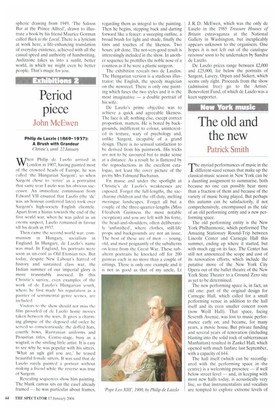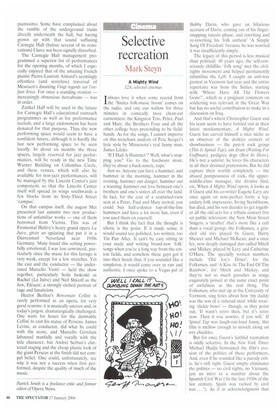The old and the new
Patrick Smith
Themyriad performances of music in the different-sized venues that make up the classical-music season in New York can be a daunting assignment to summarise, both because no one can possibly hear more than a fraction of them and because of the variety of music being played. But perhaps this autumn can be satisfactorily, if not comprehensively, encompassed as the tale of an old performing entity and a new performing space.
The old performing entity is the New York Philharmonic, which performed The Amazing Stationary Round-Trip between Lincoln Center and Carnegie Hall this summer, ending up where it started, but with much egg on its face. The Center has still not announced the scope and cost of its renovation efforts, which include the putative move of the New York City Opera out of the ballet theatre of the New York State Theater to a Ground Zero site as yet to be determined.
The new performing space is, in fact, an old one: part of the original design for Carnegie Hall, which called for a small performing venue in addition to the hall itself and its even smaller concert room (now Weill Hall). That space, facing Seventh Avenue, was lost to music performance early on, and became, for many years, a movie house. But private funding and several years of renovation (including blasting into the solid rock of subterranean Manhattan) resulted in Zankel Hall, which opened with much fanfare last September, with a capacity of 644.
The hall itself (which can be reconfigured with the performing space in the centre) is a welcoming presence if well below street level and, in keeping with most new halls today, is acoustically very live, so that instrumentalists and vocalists are tempted to explore extreme levels of pianissimo. Some have complained about the rumble of the underground trains directly underneath the hall, but having grown up with that sound suffusing Carnegie Hall (before several of its renovations) I have not been signally disturbed.
The Carnegie Hall management programmed a superior list of performances for the opening months, of which I especially enjoyed that of the amazing French pianist Pierre-Laurent Airnard's seemingly effortless (and scoreless) traversal of Messiaen's daunting Vingt regards sur Fenfant Jesus. For once a standing ovation — increasingly obnoxious hereabouts — was in order.
Zankel Hall will be used in the future for Carnegie Hall's educational outreach programmes as well as for performance recitals, and a large endowment has been donated for that purpose. Thus the new performing space would seem to have a confident future, although it is hardly the last new performing space to be seen locally. In about six months the three spaces, largely reserved for jazz performances, will be ready in the new Time Warner Building on Columbus Circle, and these venues, which will also be available for non-jazz performances, will be managed by the Lincoln Center's jazz component, so that the Lincoln Center itself will spread its wings southwards a few blocks from its Sixty-Third Street 'campus'.
On that campus itself, the august Met presented last autumn two new productions of unfamiliar works — one of them borrowed from Vienna. This was of Fromental Halevy's hoary grand opera La hive, given an updating that put it in a Diirrenmatt Neverland near 1930s Germany. Many found this setting powerfully emotional; I was less convinced, particularly since the music for this farrago is very weak, except for a few stretches. Yet the cast and the conductor — the underrated Marcello Viotti — held the show together, particularly Soile Isokoski as Rachel (La Juive) and Neil Shicoff as the Jew, Eleazar, a strongly etched portrait of rage and fanaticism.
Hector Berlioz's Ben venuto Cellini is rarely performed as an opera, for very good reasons: it is musically uneven and, in today's jargon, dramaturgically challenged. One waits for hours for the damnable Cellini to cast his statue of Perseus. James Levine, as conductor, did what he could with the score, and Marcello Giordani laboured manfully and vocally with the title character, but Andrei Serban's cluttered staging and the cheap plastic look of the giant Perseus at the finish did not compel belief. One could, unfortunately, see why it was not a success when first performed, despite the quality of much of the music.
Patrick Smith is a freelance critic and former editor of Opera News.



































































 Previous page
Previous page